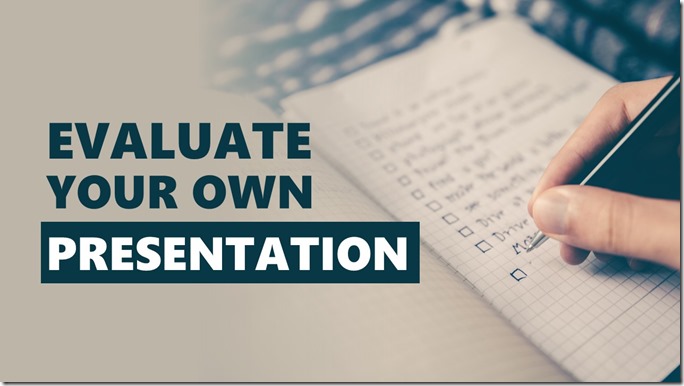
Entering 2019, many hopes spark, including having a better job, a rising career, or maybe just improving the way we work for the better. Evaluating what we have done in the previous year and not being satisfied about it is normal. This is what distinguish between people who will continue to grow and succeed with those who are stagnant.
Last year you probably did a lot of work presentations. The more often you make presentations, the more proficient you are doing it. But there are things that haven’t made you satisfied. You know you’re are good, but not good enough. But what is it? What needs to be improved? How do I evaluate that?
The following are some steps you can take to identify what is still lacking in your presentation and how to improve that.
1. Ask for your coworkers or audience opinions

To colleagues, you can ask directly their opinions about your presentation, but don’t do it casually. Take the time to ask questions and critiques from your closest colleagues in the office. Usually they are the ones who can give the most honest opinions for you.
While for other audience of your presentation, who may not be the people you know very close (for example: you are an external trainer for their company), you can do follow up via e-mail, as you thank them for using your service.
Ask them for their input and opinions about the presentation you’ve presented. If you want to make it easier for your audience, you can make an evaluation form or questionnaire, not too long, not more that 5 or 10 questions.
Ask them to fill in and send you back voluntarily, saying this will be very useful for your next performs.
2. Learn your body language
Body language is a very essential thing in a presentation. Sometimes the impact of body language can be more powerful than the words. It can also strengthen your words. If you recorded every presentations you did with video, see your own body language. Did you get it right? Are you making the impact that you want? If not, continue to practice it.
3. Give a presentation to yourself

Sometimes this method can surprise you, because you might not understand what you are saying. Maybe it’s because your choice of words: too complicated, too much using fancy words, etc. Ask yourself, is the intro interesting enough? What about the conclusion? Is it brief, yet strong enough? You can also learn it through video of your own presentation.
4. Study feedback
Take the time to look at the feedback given by your audience from your last presentations. You will find a pattern. Study that and use it for your next presentation. If their feedback is not clear to you, follow up, ask again.
People like to be asked about their opinions. If you don’t understand their feedback, how can you improve your presentation later? So ask for feedback as clearly as possible.
Following these steps will give you a great deal of confidence. There is nothing better than noticing your own flaws and knowing how to fix them. In the end, this will also bring improvements to your presentation. (*)





